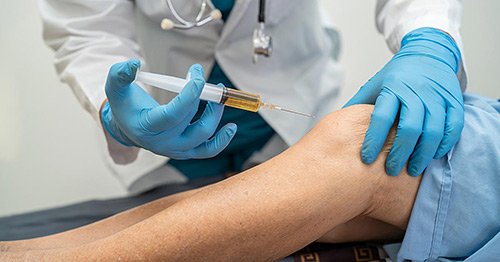Surgery has long been the go-to solution for many musculoskeletal injuries and conditions. But what if there was a less invasive option that could promote healing and reduce recovery time? That’s where Platelet-Rich Plasma (PRP) therapy comes in.
What is PRP?
PRP is a concentrated solution of your own platelets, the clotting factors in your blood that also contain growth factors. These growth factors play a vital role in healing by stimulating cell regeneration and tissue repair. In PRP therapy, a sample of your blood is drawn, processed to increase the platelet concentration, and then injected into the injured area.
Why Choose PRP Over Surgery?
While surgery can be necessary for certain severe injuries, PRP offers several advantages:
-
Minimally Invasive: PRP injections are a much less invasive procedure compared to surgery. This translates to less pain, scarring, and risk of infection.
-
Faster Recovery: By promoting healing, PRP can significantly reduce recovery time compared to surgery. This allows you to get back to your normal activities much sooner.
-
Reduced Pain: PRP injections can help manage pain associated with injuries and conditions like tendonitis and arthritis.
-
Natural Healing: Since it uses your own body’s healing factors, PRP offers a natural approach to treatment, avoiding the potential side effects of medications.
-
Fewer Risks: Compared to surgery, PRP carries a lower risk of complications like bleeding, infection, and nerve damage.
Applications of PRP Therapy
PRP therapy is used for a variety of conditions affecting muscles, tendons, ligaments, and joints. Some common applications include:
-
Tendonitis: PRP injections can accelerate healing and reduce pain in inflamed tendons, such as those in the elbow, shoulder, and knee.
-
Ligament Sprains: PRP can promote ligament healing and improve joint stability after sprains.
-
Arthritis: While not a cure, PRP may help manage pain and inflammation associated with osteoarthritis.
-
Sports Injuries: PRP therapy is popular among athletes for faster recovery from injuries like muscle tears and ligament damage.
-
Hair Loss: PRP injections are increasingly used to stimulate hair growth in men and women experiencing hair thinning.
Important Considerations
While PRP offers promising benefits, it’s important to note that research on its effectiveness is still ongoing. It may not be suitable for everyone, and results can vary depending on the condition and individual factors. Consulting with a healthcare professional experienced in PRP therapy is crucial to determine if it’s the right option for you.
Conclusion
PRP therapy offers a safe and minimally invasive approach to promoting healing and reducing recovery time for various musculoskeletal conditions. If you’re looking for an alternative to surgery, discuss PRP with your doctor to see if it can help you get back on your feet faster.
For more about PRP Injections, read this article by the American Academy of Orthopaedic Surgeons https://orthoinfo.aaos.org/en/treatment/platelet-rich-plasma-prp/




